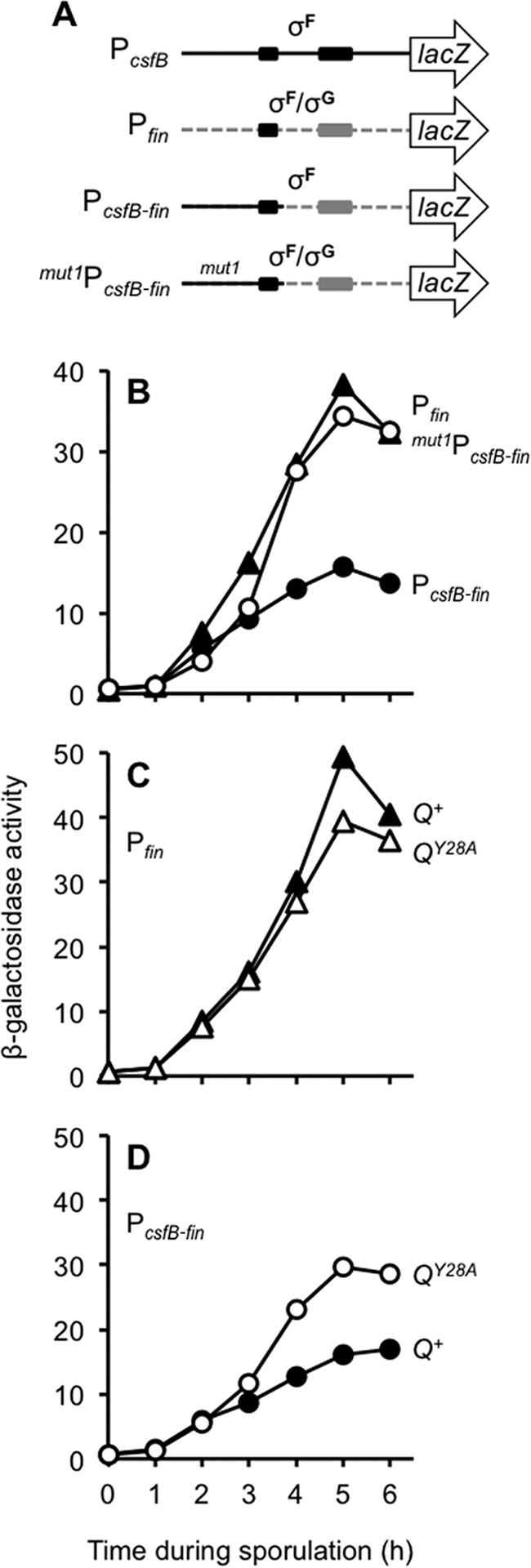FIG 5.

The conserved 37-nt sequence from P1csfB is sufficient to reduce σG-dependent activation of a promoter ordinarily recognized by σF and σG. (A) Cartoon of P1csfB, Pfin, and a chimeric promoter (PcsfB-fin) in which the 37-nt conserved sequence from P1csfB was substituted for the corresponding 37 nt in Pfin. Also shown is the mut1PcsfB-fin promoter construct in which the 7-nt sequence mutated in mut1P1csfB is introduced into PcsfB-fin (marked by mut1). The −35 and −10 elements for each promoter are indicated as shaded boxes; note that PcsfB and Pfin have identical −35 elements. (B) The PcsfB-fin promoter but not mut1PcsfB-fin displays significantly reduced activation by σG. β-Galactosidase production from Pfin (triangles), PcsfB-fin (closed circles), and mut1PcsfB-fin (open circles) fusions to lacZ (inserted at the amyE locus) was measured during sporulation of otherwise wild-type strains (strains KF76, KF129, KF130, and KF166, respectively). (C) Q Tyr-28 is required for maximal levels of σG activation of Pfin. Pfin-lacZ reporter gene expression was monitored in strains harboring Q+ or QY28A (strains KF146 and KF152, respectively). (D) σG-dependent activation of PcsfB-fin is unmasked in the QY28A mutant. PcsfB-fin-lacZ reporter gene expression was monitored in strains harboring Q+ or QY28A (strains KF147 and KF153, respectively). In all strains for which the results are shown in panels C and D, the native Q gene was deleted and either Q+ or QY28A was encoded at the sacA locus. Reporters were inserted at amyE.
